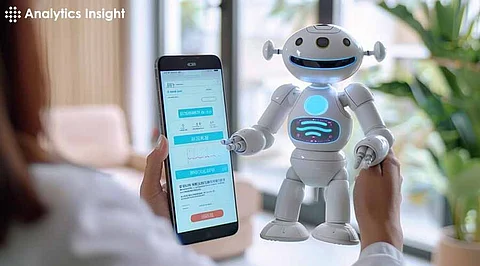

AI chatbots have become a prominent tool in corporate communications, transforming the way businesses interact with customers, streamline operations, and engage employees. The chatbot industry is growing rapidly, driven by advancements in artificial intelligence, large language models (LLMs), and natural language processing (NLP).
By 2028, the global chatbot market is expected to reach US$15.5 billion, reflecting an annual growth rate of about 23% from its 2020 valuation of US$4.7 billion. This rise highlights the increasing adoption of chatbots by businesses of all sizes to improve operational efficiency and customer experience.
However, while AI chatbots offer significant benefits, they also pose challenges and risks that organizations must navigate to ensure success.
Let’s explore the double-edged nature of AI chatbots in corporate communications, examining both their potential and their pitfalls.
AI chatbots have revolutionized customer service by providing instant, personalized responses to inquiries.
With nearly 90% of customer queries resolved in fewer than 11 messages, chatbots have proven to be highly effective in streamlining interactions. This instant responsiveness not only reduces customer wait times but also boosts overall satisfaction.
A recent survey indicates that 96% of respondents believe companies using chatbots demonstrate strong customer care.
The integration of advanced LLMs, such as GPT-4 and Google’s PaLM 2, enables chatbots to understand context better, and even predict customer behavior based on past interactions. This personalization is crucial for fostering customer loyalty in a competitive market.
One of the primary reasons businesses invest in AI chatbots is the potential for cost savings. By automating routine tasks and providing 24/7 support, chatbots reduce the need for human agents, cutting operational costs, especially in customer service departments by up to 30%.
Chatbots can reduce response times by 20% on platforms like WhatsApp and even improve conversion rates by as much as 30% on websites.
Moreover, AI chatbots excel at managing high volumes of interactions, automating processes such as appointment scheduling and email management, and handling common HR queries.
This not only saves time but also allows employees to focus on more strategic tasks, optimizing the overall efficiency of the business.
Internally, AI chatbots have become indispensable in managing corporate workflows. They can handle tasks like onboarding new employees, answering HR-related queries, and providing real-time company policy information.
This automation relieves HR teams from mundane administrative work, allowing them to focus on strategic initiatives. Companies that use AI chatbots for internal processes have reported a 40% increase in workflow efficiency.
In addition, 56% of corporate communication professionals now rely on AI tools daily to enhance productivity.
Whether generating text, summarizing content, or proofreading, AI tools have streamlined the work of communication teams, allowing for faster and more accurate strategy development.
AI chatbots are highly scalable and can deliver consistent communication across multiple platforms, including websites, social media, and messaging apps.
For instance, many companies use chatbots on platforms like WhatsApp to provide personalized support and real-time updates, significantly reducing response times.
The rise of voice-enabled chatbots has also expanded the scope of AI applications in corporate communications.
As voice-driven interactions become more prevalent, companies are adopting voice bots to handle customer queries in a more interactive and engaging manner, offering an even wider array of services to their users.
Despite the numerous benefits of AI chatbots, businesses face several challenges when implementing these systems.
With chatbots handling large volumes of sensitive information, ranging from customer details to personal data, the issue of data privacy has become a significant concern.
The introduction of global regulations such as the General Data Protection Regulation (GDPR) and the California Consumer Privacy Act (CCPA) has made data protection even more critical.
Businesses must invest in robust security measures to ensure user data is safeguarded and that privacy concerns are addressed transparently.
Training an AI chatbot to handle the diverse range of queries from customers is often a time-consuming and labor-intensive process. Businesses with diversified product lines or services must input large amounts of domain-specific data to properly train the chatbot.
This process can take months, and regular updates are required to ensure the chatbot stays current with new information and customer preferences.
Many organizations struggle with these complexities. According to a Deloitte survey, one of the main reasons businesses hesitate to adopt chatbots is the difficulty associated with training data and ongoing maintenance.
While LLMs have significantly improved the ability of chatbots to process context and deliver human-like responses, there are still scenarios where miscommunication occurs. Chatbots can struggle to understand the nuances of human language, leading to responses that may not fully address the customer's needs.
This can be frustrating, particularly in situations that require emotional intelligence or human judgment. Many businesses are now adopting hybrid models where simple queries are handled by chatbots, and more complex issues are directed to human agents.
This approach strikes a balance between automation and the need for human interaction in customer communications.
The rise of AI chatbots also raises concerns about job displacement, particularly in customer service roles. While chatbots can handle a large volume of inquiries, businesses must invest in upskilling employees for roles that require human intelligence and strategic thinking.
This shift in responsibilities will be essential to ensure that human workers remain an integral part of the communication process.
AI chatbots are poised to become a cornerstone of corporate communications, offering vast opportunities to improve customer experiences and streamline operations. However, businesses must approach this technology with caution.
Chatbots should not replace human work but complement it, ensuring that both automation and human expertise are leveraged to meet business objectives.
To fully realize the benefits of AI chatbots, organizations must invest in proper training, robust data protection, and a hybrid communication model.
By doing so, businesses can navigate the challenges and embrace the opportunities ensuring a future where AI chatbots serve as valuable tools in corporate communications.
